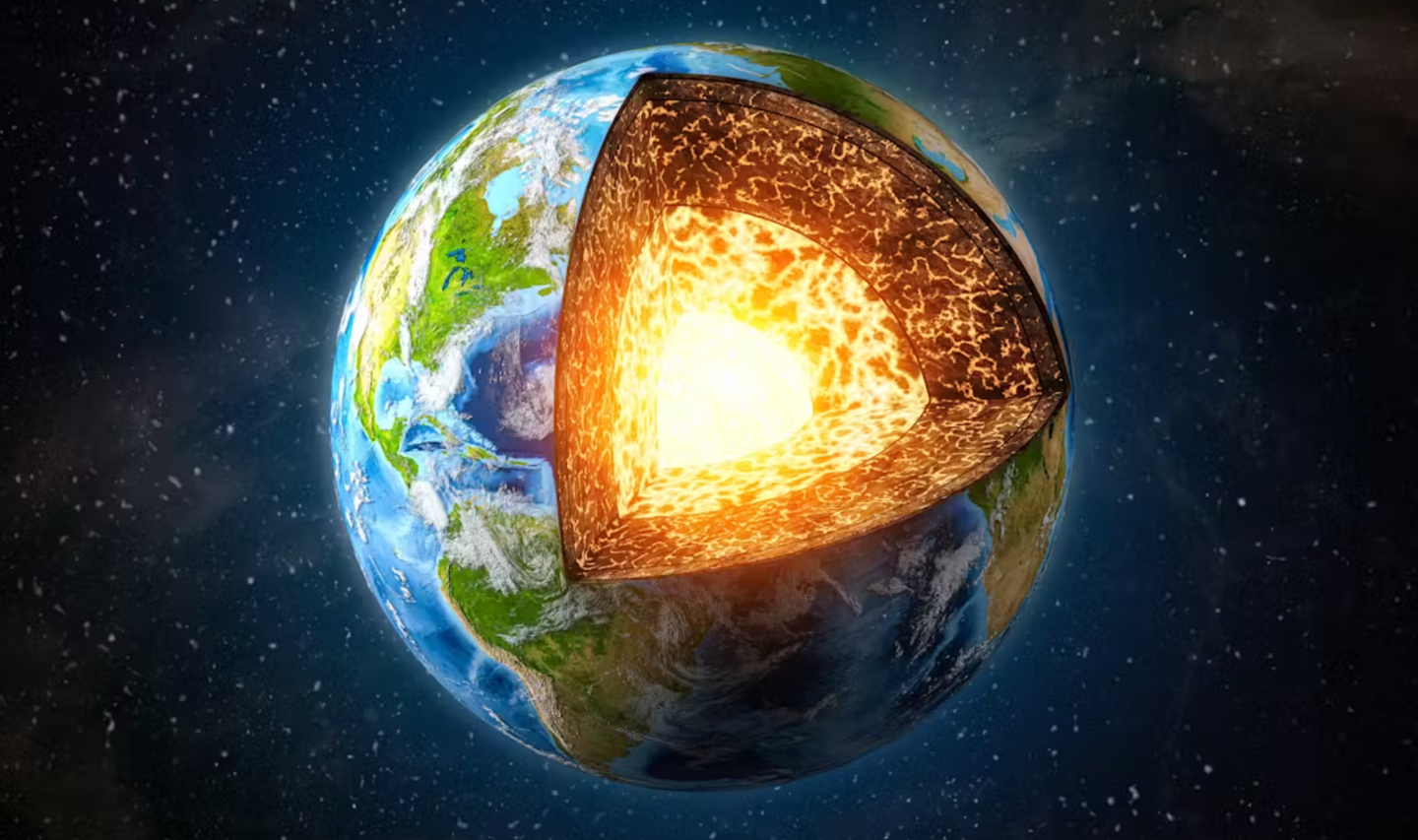Earth’s inner core is far less solid than previously believed
New research reveals that Earth’s inner core is deforming due to interactions with the molten outer core, challenging previous knowledge

Scientists discover Earth’s inner core is deforming, challenging previous views of its stability. (CREDIT: CC BY-SA 4.0)
Deep beneath the Earth's surface, the inner core has long been thought of as a solid sphere, steadily growing as the outer core cools and crystallizes.
However, a new study suggests that the inner core is not as stable as once believed. Scientists have detected structural changes in its near surface, revealing that it may undergo deformation over time.
For decades, seismologists have analyzed earthquake waves passing through the inner core to track its movement. These studies suggested that the core might rotate slightly faster than the rest of the planet. But recent findings indicate that its motion has slowed or even reversed in recent years.
The study, published in Nature Geoscience, suggests that structural changes—not just rotation—are occurring deep within the planet.
John Vidale, a seismologist at the University of Southern California and lead researcher of the study, said, “What we ended up discovering is evidence that the near surface of Earth’s inner core undergoes structural change.”
Tracking Earthquake Waves to Understand the Core
To investigate changes in the core, scientists analyzed decades of seismic data from 121 repeating earthquakes near the South Sandwich Islands between 1991 and 2024. These seismic waves were recorded at monitoring stations in Fairbanks, Alaska, and Yellowknife, Canada.
Seismologists noticed unusual properties in one set of waveforms. Vidale recalled being initially puzzled: “At first, the dataset confounded me.” Only after improving their resolution techniques did the team realize they had uncovered signs of structural change in the core.
Related Stories
These findings suggest that the inner core is not simply a solid, uniform sphere. Instead, it appears to deform over time, likely influenced by interactions with the turbulent molten outer core.
How the Outer Core Influences Change
The inner core is located nearly 3,000 miles beneath the Earth’s surface, surrounded by the swirling liquid metal of the outer core. The outer core generates Earth's magnetic field and is known for its turbulence. However, until now, scientists had not observed its effects on the solid inner core over human timescales.
Vidale explained, “The molten outer core is widely known to be turbulent, but its turbulence had not been observed to disrupt its neighbor, the inner core, on a human timescale.”
The study suggests that as the outer core moves, it may exert forces that alter the inner core’s shape, causing it to deform. This could also be linked to slight variations in Earth’s rotation and the length of a day, which have been observed over time.
Implications for Earth’s Thermal and Magnetic Field
Understanding changes in the inner core could improve knowledge of Earth’s magnetic field, which shields the planet from harmful solar radiation. The interaction between the inner and outer core plays a key role in maintaining this magnetic shield. If the inner core is deforming, it could influence long-term changes in the field’s strength and stability.
The study also supports previous research suggesting that the inner core’s rotation is not constant. Some models indicate that it slowed or even reversed direction around 2010, aligning with observations of shifting seismic waves.
By uncovering evidence of deformation, scientists may be one step closer to understanding how the Earth’s core evolves.
This research opens new questions about the planet’s deep interior and how it influences everything from magnetic field generation to the subtle changes in the length of a day.
In addition to Vidale, other study authors include Ruoyan Wang of USC Dornsife, Wei Wang of the Chinese Academy of Sciences, Guanning Pang of Cornell University and Keith Koper of the University of Utah.
This research was supported by the National Science Foundation (EAR-2041892), the National Natural Science Foundation of China (42394114), the National Key R&D Program of China (Grant 2022YFF0503203) and the Key Research Program of the Institute of Geology & Geophysics (IGGCAS-201904, IGGCAS-202204).
Note: Materials provided above by The Brighter Side of News. Content may be edited for style and length.
Like these kind of feel good stories? Get The Brighter Side of News' newsletter.
Joshua Shavit
Science & Technology Writer | AI and Robotics Reporter
Joshua Shavit is a Los Angeles-based science and technology writer with a passion for exploring the breakthroughs shaping the future. As a contributor to The Brighter Side of News, he focuses on positive and transformative advancements in AI, technology, physics, engineering, robotics and space science. Joshua is currently working towards a Bachelor of Science in Business Administration at the University of California, Berkeley. He combines his academic background with a talent for storytelling, making complex scientific discoveries engaging and accessible. His work highlights the innovators behind the ideas, bringing readers closer to the people driving progress.



